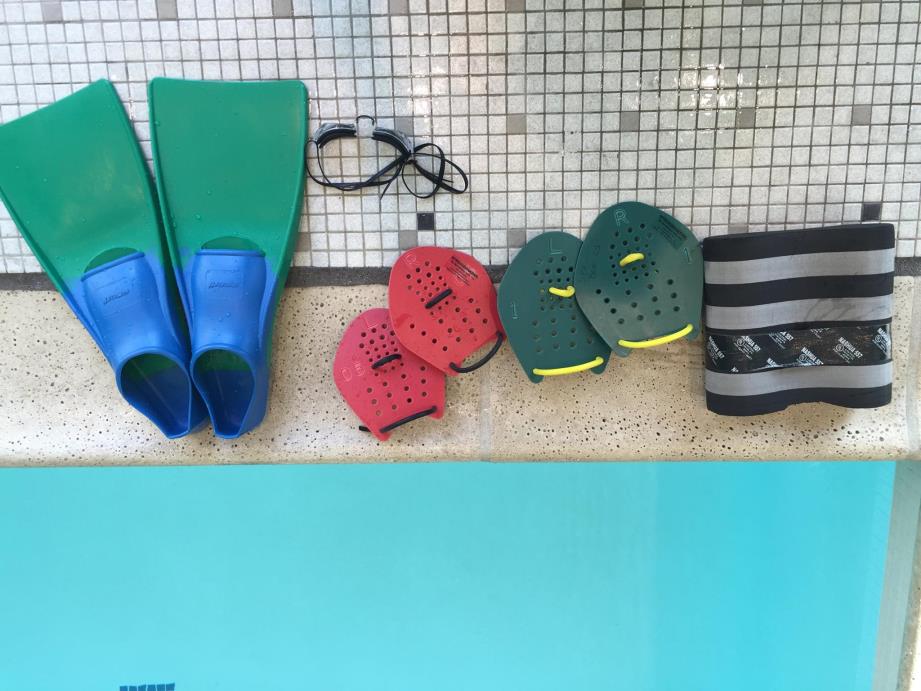Master the Art of the Pull Buoy
Swim Technique, January 28, 2016
Avoid treating this pool tool like a crutch. Here's how to make a piece of foam work for you.
The pull buoy—that funny little piece of foam you stick between your legs when swimming—is a common point of contention among triathletes. Have you ever been told that swimming with one is addictive and bad for your swim? I’ve heard this far too often, from both athletes and swim coaches.
First, two important points. This year I am coaching a team of 65 college athletes and 45 age-group athletes, all of different levels. All of them use pull buoys. A lot. Not one of them has failed to improve their swimming in races—and no, I’m not talking about the illusion that fast 100-yard pool splits can sometimes offer.
Secondly, swim coaches often forget that they’ve been swimming since they were five years old, whereas most triathletes learn to swim much later in life (like I did.) Our goal should always be to get the best out of each athlete—not to try and make everyone Michael Phelps.
Avoid: Buoy bloopers
Many athletes feel addicted to the buoy because of the better body position it creates, which leads to better glide in the water. When you glide, however, you reduce your stroke rate. A reduced stroke rate combined with a poorly honed body position won’t help you much in a race.
→The Fix: Count your strokes (per 25 or 50) with no buoy or paddles and mimic this exactly when using buoys. Usually the worse your body position, the higher your stroke rate needs to be so you can be on top of water (reducing "accelerations" of your stroke that cause more fatigue.)
Many triathletes pair their buoy use with paddles that are much too big. It’s easy to think that if we want to glide more, then bigger must be better. This couldn’t be further from the truth: None of us has the power and skills of Olympic swimmers to be able to pull large paddles. This results in slowing our stroke rate even more because of a lack of strength.
→The Fix: Get paddles the size of your hands and make sure when using them, you're not more than one stroke per 25 less then you are without them. As you get stronger and more skilled, you can upgrade to a bigger size as long as it doesn’t make your stroke rate slower.

Embrace: Buoy benefits
If you're a poor swimmer, your legs likely drag to bottom of the pool. This means you’ve probably never experienced the proper underwater catch phase: You’ve basically never pulled water straight back, but instead have been pulling a more diagonal line through the water (first down and then back). Swim coaches might encourage you to keep your elbows high, but this is only possible for someone with a good body position. The pull buoy improves body position in the water so that it's easier for the athlete to achieve the high elbow coaches ask for.
With the better body position created by the buoys, the athlete can experience a proper catch not pulling water down first and also reducing many shoulder injuries.
With pull buoys and paddles, you can work on specific strength without taxing your cardiovascular system (often already used when cycling or running, often on the same day). By using different energy systems, you can train more and recover faster and better.
Quick and easy pull buoy workout for triathletes:
40 x 50 with 15 seconds rest* as:
5 x 50 warm up, using no pull buoys or paddles
30 x 50 easy moderate effort, using pull buoy and paddles, every fifth one do with an all-out effort
5 x 50 cool down, no buoy or paddles
*The long rest interval helps to reduce stress on the aerobic system, turning this workout in strength and technique development. The quality of the 50s will be higher with more rest.
Sergio Borges specializes in triathlon coaching and has qualified over 115 athletes for Kona. He focuses on coaching age group athletes of all abilities, especially those who are trying to manage family, work and travel.
